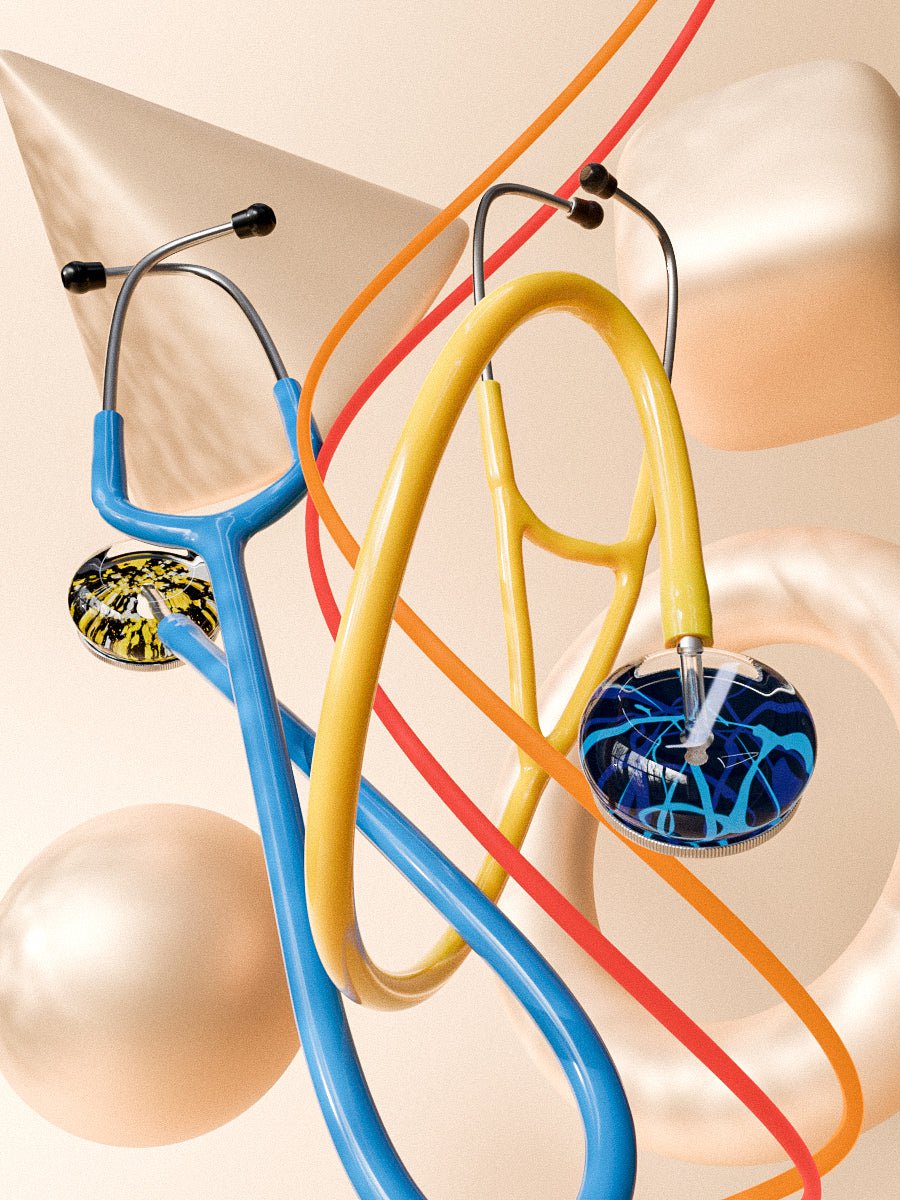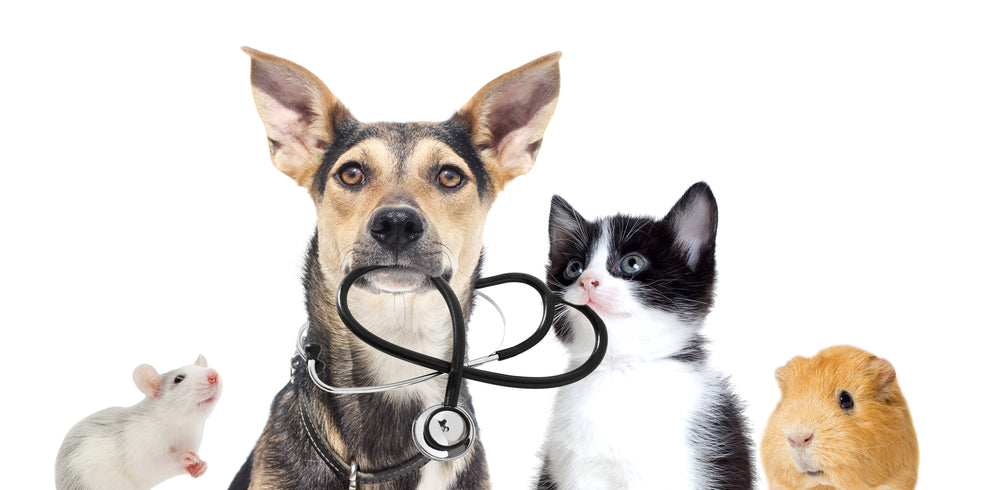A stethoscope is a medical instrument commonly used to listen to the body's internal sounds in a process called auscultation. The doctor opts to place the stethoscope or even a custom stethoscope at your back when your respiratory system is functioning abnormally. In case one has altered breathing patterns or difficulty in breathing, some sounds like wheezes and crackles may be heard when auscultating your back during a complete or focused assessment.
Auscultation is one of the integral parts of a patient’s routine examination because it is used to provide evidence of any existing condition that could be affecting your lungs. The article below explains why a stethoscope is placed at your back and other uses of the stethoscope. Let’s brush through.
3 Reasons Why the DR Listens to Your Back with a Stethoscope
A stethoscope amplifies internal sounds
It is a device with both the diaphragm and the bell, all of which are used to amplify internal sounds in body organs. For instance, when listening for breath sounds or lung sounds, the diaphragm is always pressed against the skin because it effectively transmits high-frequency sounds or high-pitched sounds. Therefore by amplifying these breath sounds, the doctor easily differentiates between normal and abnormal lung sounds.
Provides information for comparison with anterior recordings
Posterior auscultation, which involves placing the stethoscope at the back during a physical examination, is always done to provide data for comparison with anterior readings. It is set to determine if an individual has normal, abnormal, decreased, or absent breath sounds. A problem is detected in your lungs when the doctor records decreased, or absent lung sounds because it shows that your lungs are either filled with fluid or air. It may be an indication of one having pneumonia, pleural effusion, or heart failure.
The stethoscope is placed at different positions on your back during the examination. To start with, the doctor places it on your right just above the scapula so that he can listen to the lung sounds at the apex of your lung. The care provider then gets to the seventh cervical vertebra and to T3, which is a region between your spine and shoulder blade.
Doing so enables them to assess the left and right upper lobes of the lungs. As a doctor, you are supposed to place the device between T3 to T10, where you auscultate the right and left lower lobes of the lungs. Lastly, the health care professional must move the stethoscope around the posterior chest to assess various areas while making the comparison.
The device differentiates between wheezes and crackles
Since a stethoscope is used to listen to lung sounds all through a complete respiratory cycle, it enables your doctor to determine whether you have crackles or wheezes. Crackles are abnormal lung sounds caused by excessive secretions in the airways. It can either be due to a transudate or an exudate.
An exudate can be due to a lung infection like pneumonia, while a transudate can be due to congestive heart failure. A crackle usually occurs when a small collapse in the airway during inspiration and is caused by loose secretions. However, crackles are more common during inspiration than in expiration. They are high-pitched and not continuous.
On the other hand, wheezes are caused by the forced flow of air through collapsed airways, causing the velocity of air in the lungs to be elevated. They are described as high-pitched sounds that are continuous. They are also commonly heard on expiration than inspiration. In case they are monophonic, there is an obstruction in one airway, but if it is polyphonic, both airways are obstructed.
The phase in which the wheeze occurs depends on where the block is situated. If it occurs during the inspiratory phase, it indicates stiff stenosis caused by a scaring or tumor of the lungs. While if it is heard on expiration, it might be connected to a bronchiolar disease. One of the leading causes of wheezes is asthma, but it can also be caused by interstitial lung disease, pulmonary edema, and chronic bronchitis.
Other Uses of the Stethoscope on the Body
Other than auscultating for breath or lung sounds, a stethoscope is also used to auscultate your heart and abdomen during physical examination. Below is a brief description of how the stethoscope is used to auscultate your heart and stomach.
Auscultation of the heart
The stethoscope bell is used when auscultating heart sounds because it is effective in detecting lower-frequency sounds. In most cases, the doctor listens to S1 and S2 sounds, renowned as lub and dub. The S1 sound occurs following the closing of the mitral and tricuspid valves, and both of them tend to merge as one sound. And when the two sounds are considered independent, the tricuspid valve's closure is called T1, while that of the mitral valve is referred to as M1.
On the other hand, the second heart sound, also known as S2, is heard after the pulmonary and aortic valve closure. The closure of the aortic valve is also referred to as A2, and that of the pulmonary valve is known as P2. When the doctor is auscultating your heart, he or she mainly listens to how often every heart sound occurs, what they are like, and how loud they are. In case abnormal heart sounds are heard, it may suggest a heart problem, including heart failure.
Abdominal auscultation
During abdominal auscultation, the doctor uses a stethoscope to listen to your bowel movements. A stethoscope is used when listening to abdominal sounds because listening to bowel sounds is challenging by merely listening to your abdomen. Generally, bowel sounds are usually a regular occurrence.
But if they occur more frequently, very loud, or absent, it may indicate an underlying health condition within the digestive system. For instance, it may suggest that you have intestinal obstruction or constipation when there you have decreased bowel sounds. In contrast, if you have increased abdominal sounds, you might be diagnosed with diarrhea.
Hypoactive, hyperactive or missing bowel sounds are abnormal bowel movement results caused by either trauma, digestive tract infection, tumor, hernia, or intestinal obstruction. However, if these abnormal abdominal bowel sounds occur, the doctor may carry out some additional tests to confirm the diagnosis.
Takeaway
A stethoscope is a medical tool that is very important when performing a physical examination. All its parts, including the bell, diaphragm, and tubes, have various functions that make it work efficiently and effectively. The bell and diaphragm play a pivotal role in internal magnifying sounds from internal body organs, where the diaphragm is used for high-pitched sounds and the bell for low-pitched sounds.
A stethoscope also has a tube used to transmit the amplified sound into your ears to tell if they are present, absent, normal, or abnormal sounds. It is also a useful tool because it is very light hence easily portable. Since the stethoscope bell or diaphragm is always cold, as a nurse or doctor, you are advised to warm it a bit before making it come into contact with the skin. Doing so eases the patient's tension hence promoting their comfort throughout the examination.
It is a multipurpose device that can be used to auscultate your lungs, heart, and abdomen. As seen above, when listening to lung sounds, the stethoscope is placed in the anterior and posterior regions of the chest. Doing so provides you with data to be used for comparison to help determine if one has normal or abnormal breath sounds.
It is also used to auscultate the heart where both S1 and S2 sounds are to be heard due to heart valves' closure. If murmurs are heard, it may indicate a heart problem, and additional tests are carried out to identify the underlying condition.
Lastly, a stethoscope is used to listen to bowel movements. Bowel movements are important because they show that the digestion of food is taking place. However, absence or increased bowel movements may signify an existing digestive condition. At other times bowel movements may be altered due to the effect of some drugs, especially if you are under certain medications.





